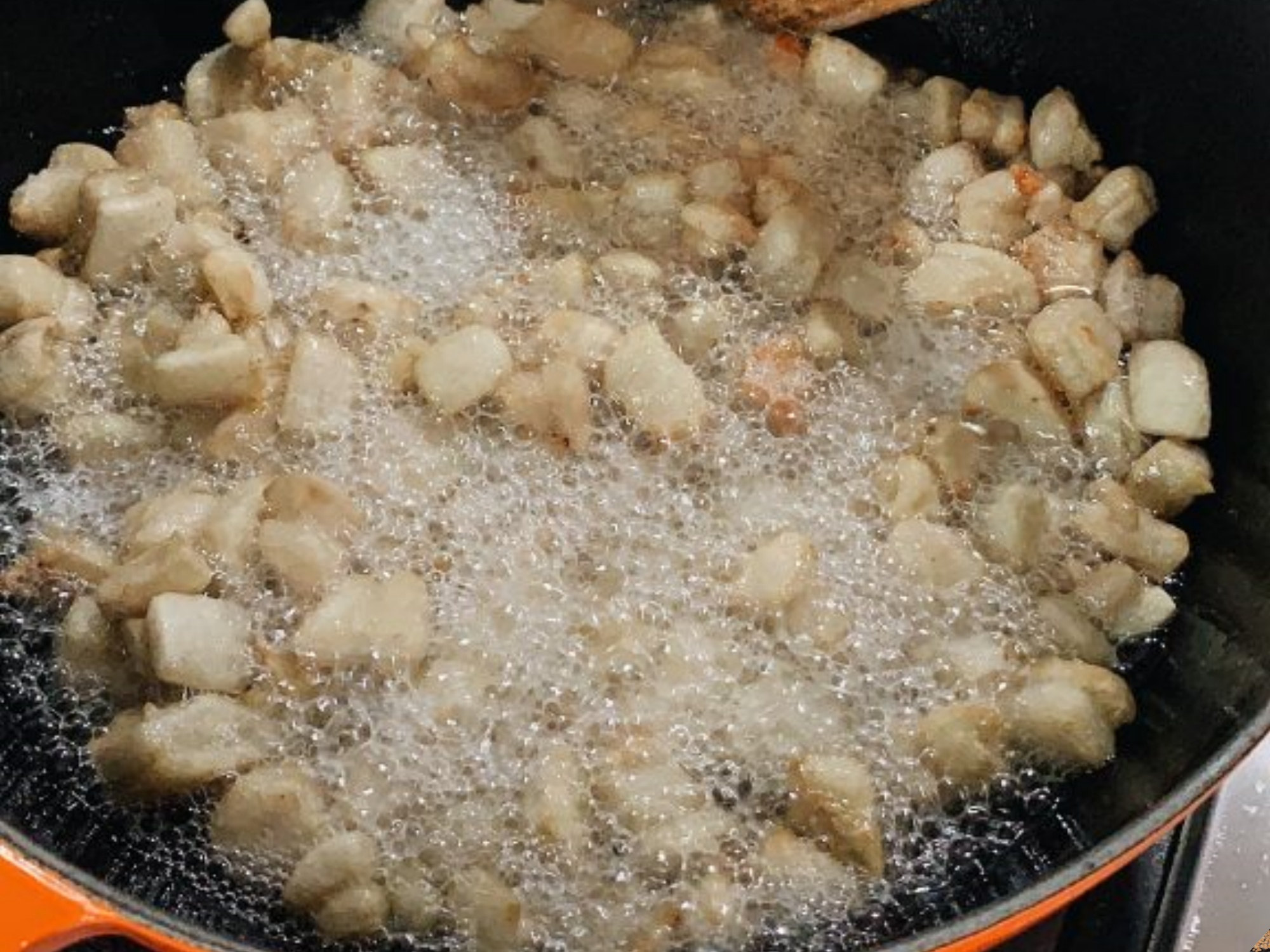
In the past, I was afraid of frying pork fat because every time I did, the grease would splatter everywhere. However, during a visit to a friend’s house, she shared a little secret with me: frying fat with plain water. It may sound absurd, but it works wonders.
The method is simple. First, thoroughly wash the fat, then cut it into bite-sized pieces. Next, place the fat in a pot and add just enough water to cover the surface. Finally, turn on the stove and start heating.
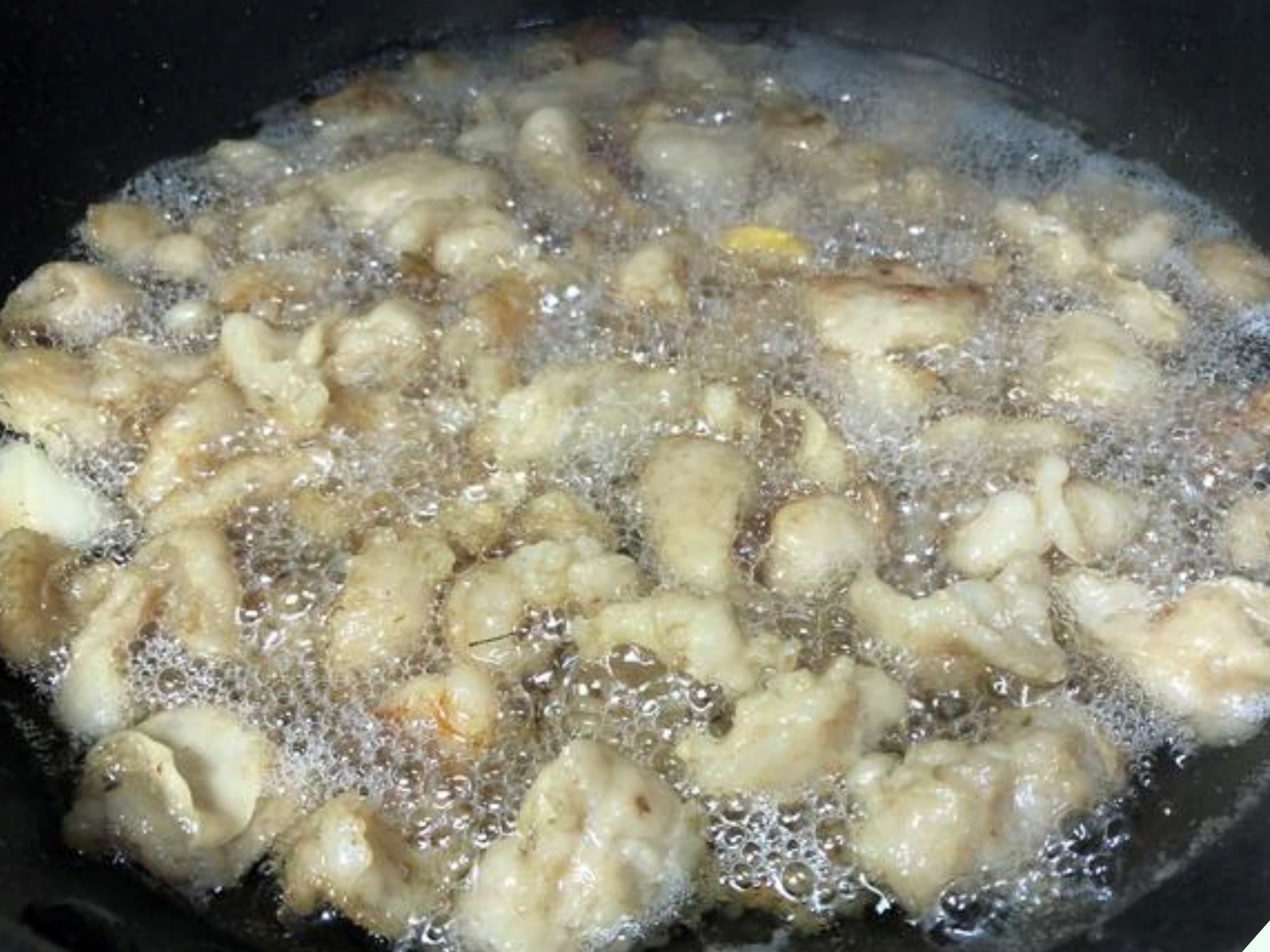
Don’t underestimate this technique; it’s highly effective. Not only does it prevent splattering, but it also allows you to heat the fat for a more extended period without burning. Moreover, adding plain water from the start ensures that the fat remains white and beautiful, even when exposed to high heat.
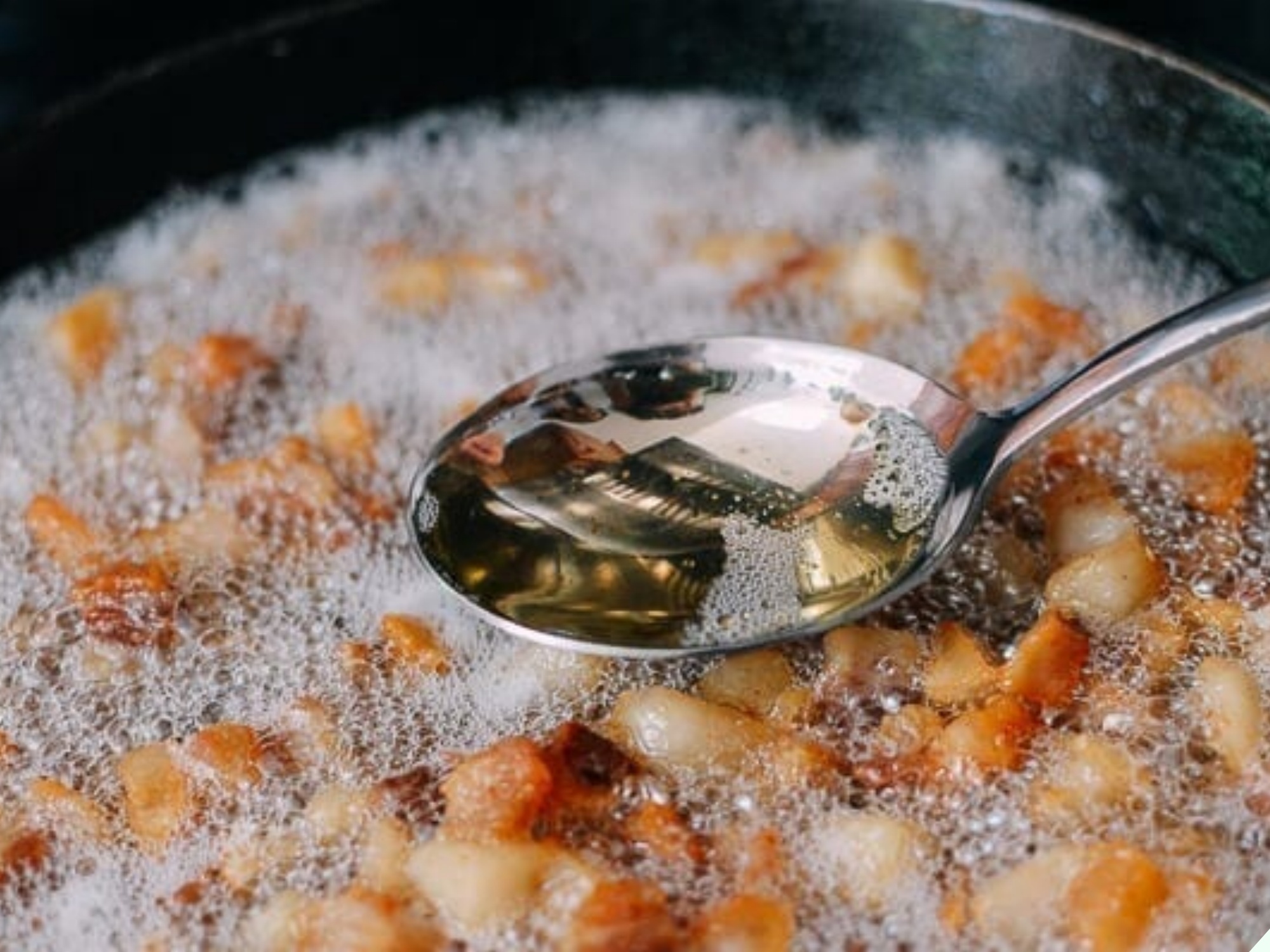
Another little-known fact is that when the water boils, the steam carries away a significant amount of the pork fat’s unpleasant odor, resulting in a more fragrant and delicious final product.
Additionally, when frying fat, keep the following tips in mind:
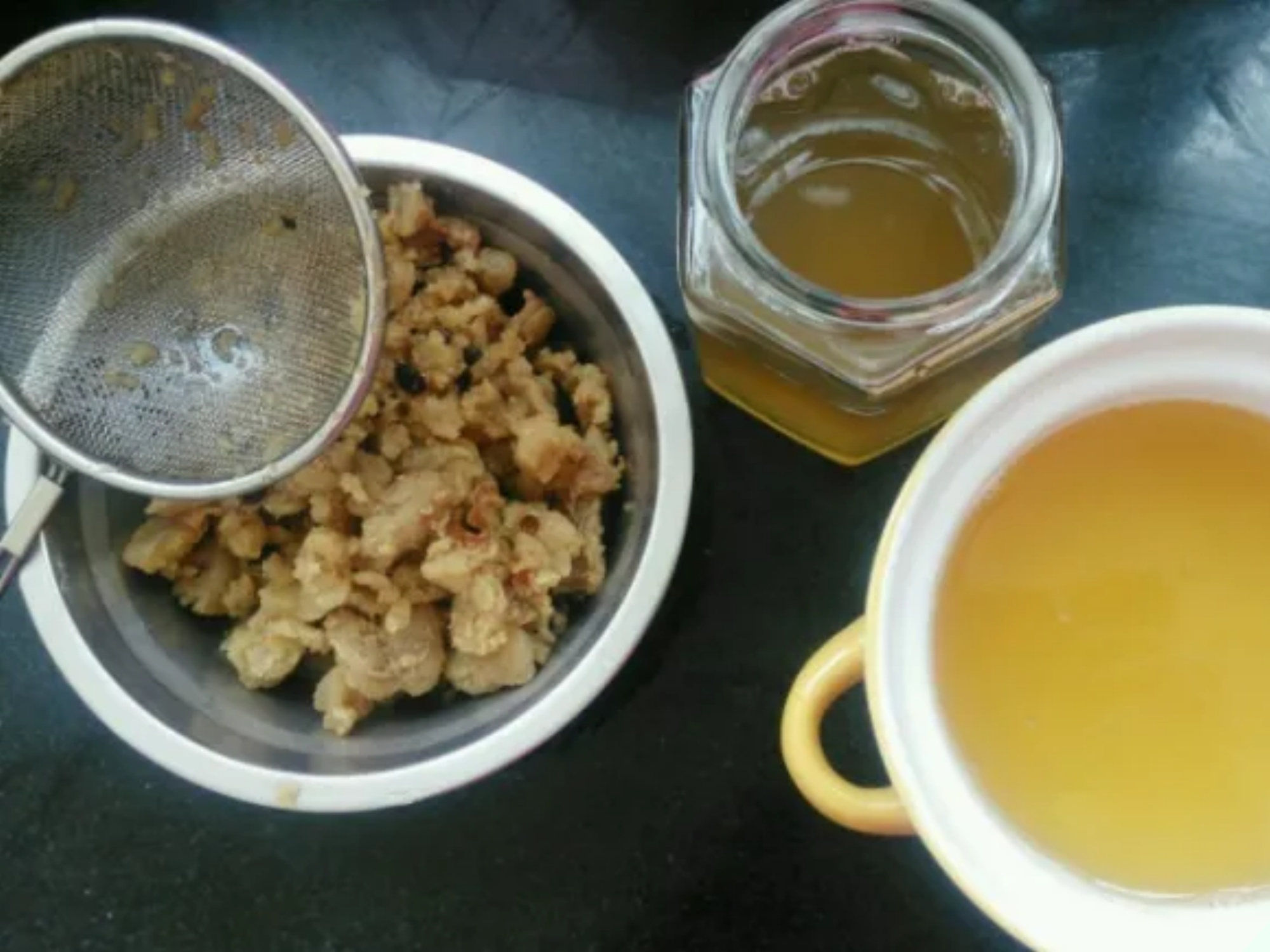
1. Avoid using cooking oil to fry the fat, as it tends to darken the fat, making it less appealing.
2. When the pork fat turns a light yellow, add scallions and peppercorns. These spices will eliminate any remaining fishy odor, enhancing the fragrance.
3. Allow the fat to cool before transferring it to a jar. Avoid pouring hot fat into containers, as the temperature can reach approximately 300°C, which may cause ceramic or glassware to crack or break.
4. Add just enough water; too much or too little can be detrimental. Aim for a level just barely covering the surface of the fat.
5. Adjust the heat as needed. Once the pot of fat starts boiling, reduce the heat. Maintaining a stable temperature will ensure the fat renders quickly and abundantly.
Guide to Frying Pork Fat Without the Splatter
– Preparation time: 10 minutes
– Cooking time: 1 hour 30 minutes
Ingredients:
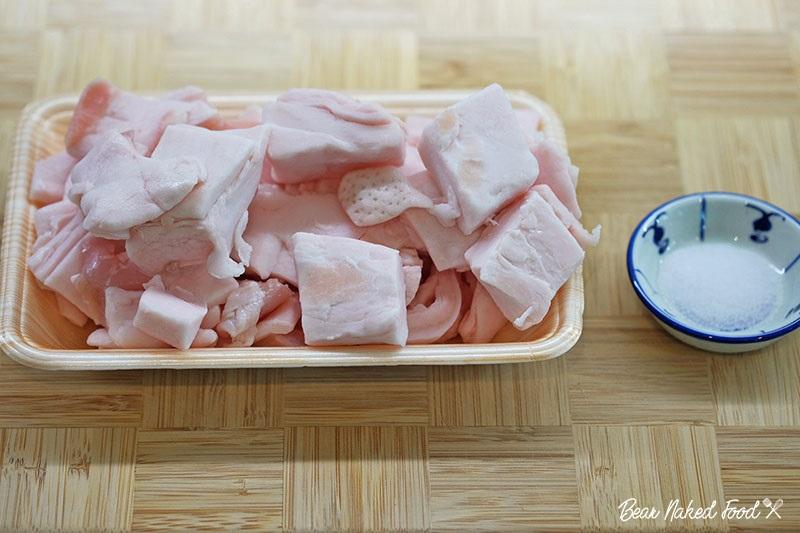
(Image source: Bearnakedfood)
– Pork fat: 500g (with skin removed)
– Salt: 1 teaspoon
– Water
Detailed Steps for Frying Pork Fat
1. Cut the pork fat into square pieces of about 5cm each. The fat will shrink during frying, so this size ensures a decent portion.
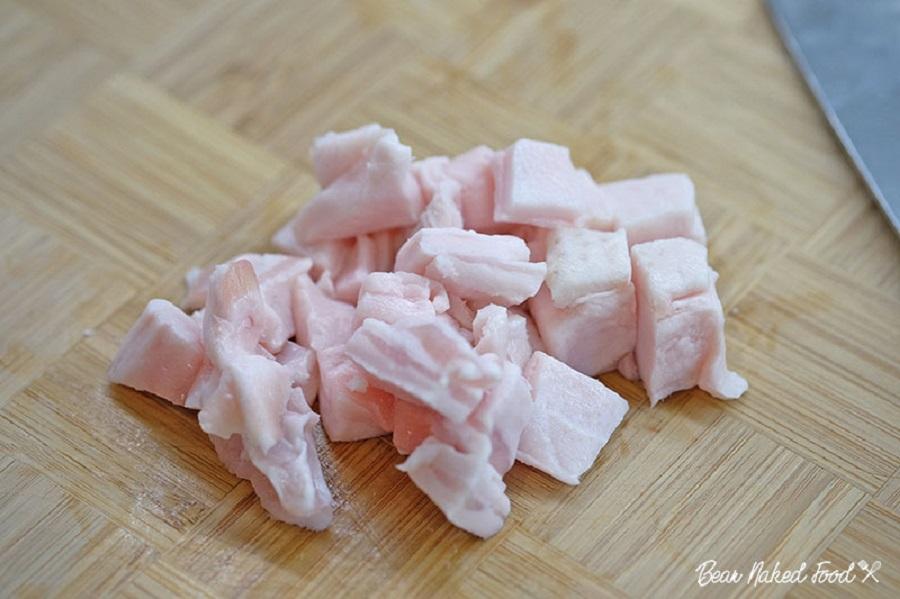
(Image source: Bearnakedfood)
2. Place the cut fat into a pot or deep pan, then add just enough water to cover the surface of the fat. Note that adding too much water will prolong the frying process.
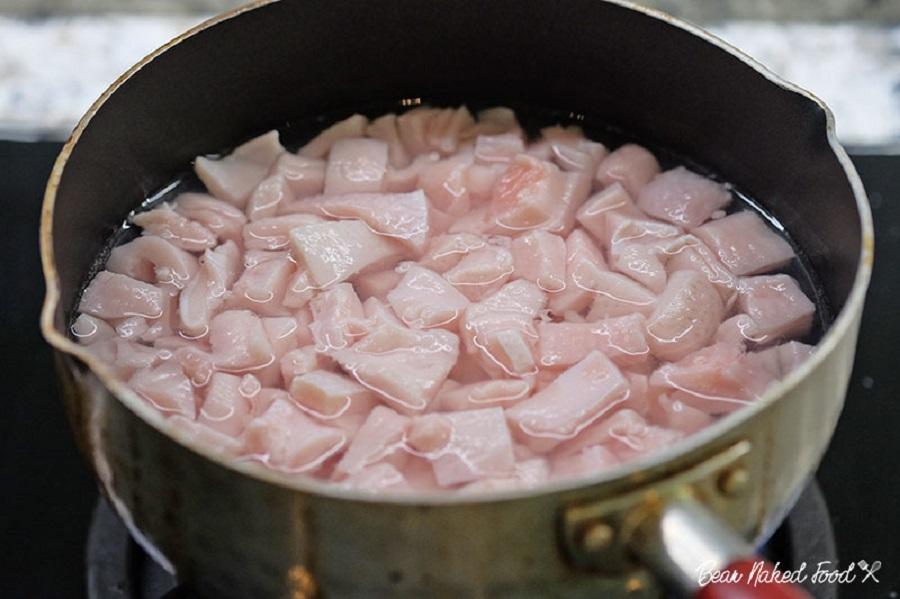
(Image source: Bearnakedfood)
3. Turn on the stove and heat the pot over medium heat with the lid open. After 30-40 minutes, add half a teaspoon of salt to the pot.
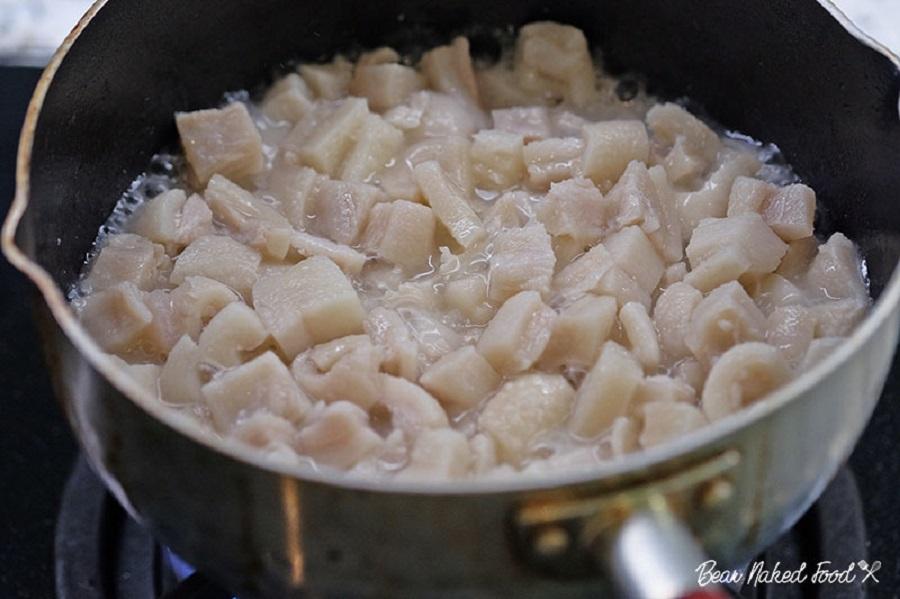
(Image source: Bearnakedfood)
4. Once the fat turns golden and shrinks, turn off the heat. Use a slotted spoon to remove the crispy bits of fat and place them on a plate lined with oil-absorbing paper. Let them cool.
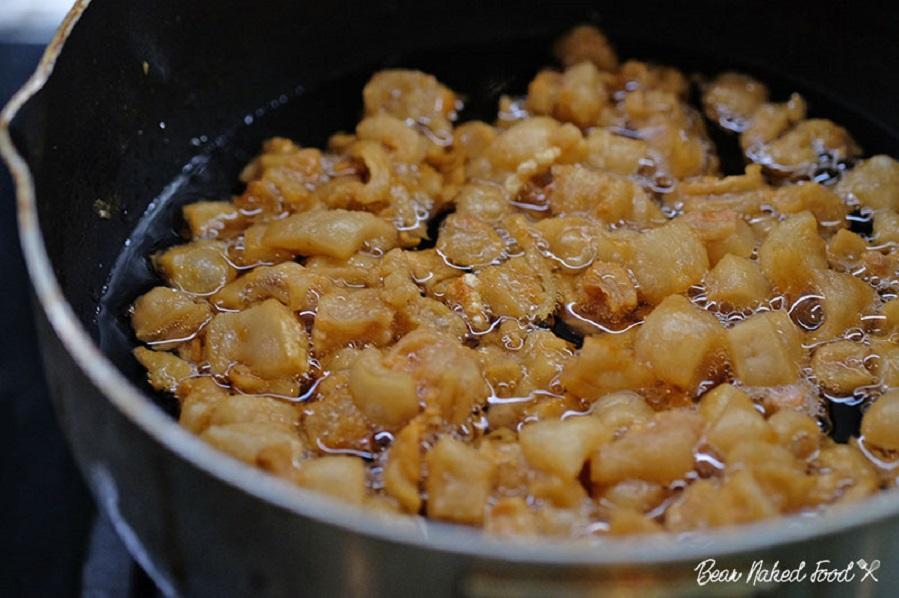
(Image source: Bearnakedfood)
5. Once cooled, transfer the crispy fat into a glass jar and store it in a cool, dry place for up to a week. Alternatively, store it in the refrigerator to extend its shelf life to a month.
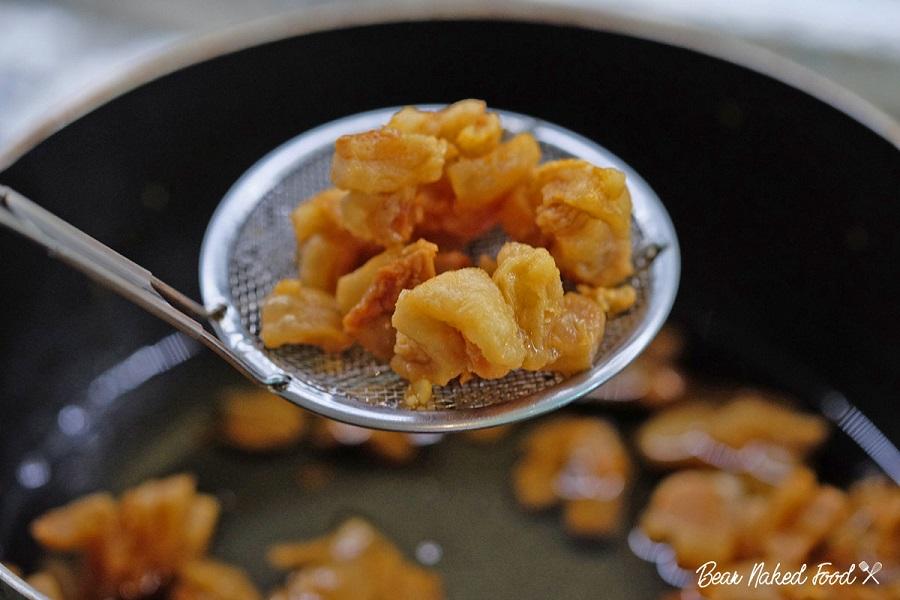
(Image source: Bearnakedfood)
Allow the liquid fat to cool, then transfer it to a glass jar or container with a tight-fitting lid. For extended freshness, store the fat in the refrigerator.
The golden, crispy bits of fat are delicious and crunchy. You can toss them with fish sauce and garlic, serve them with fresh herbs and a tomato dip, or enjoy them as a snack.
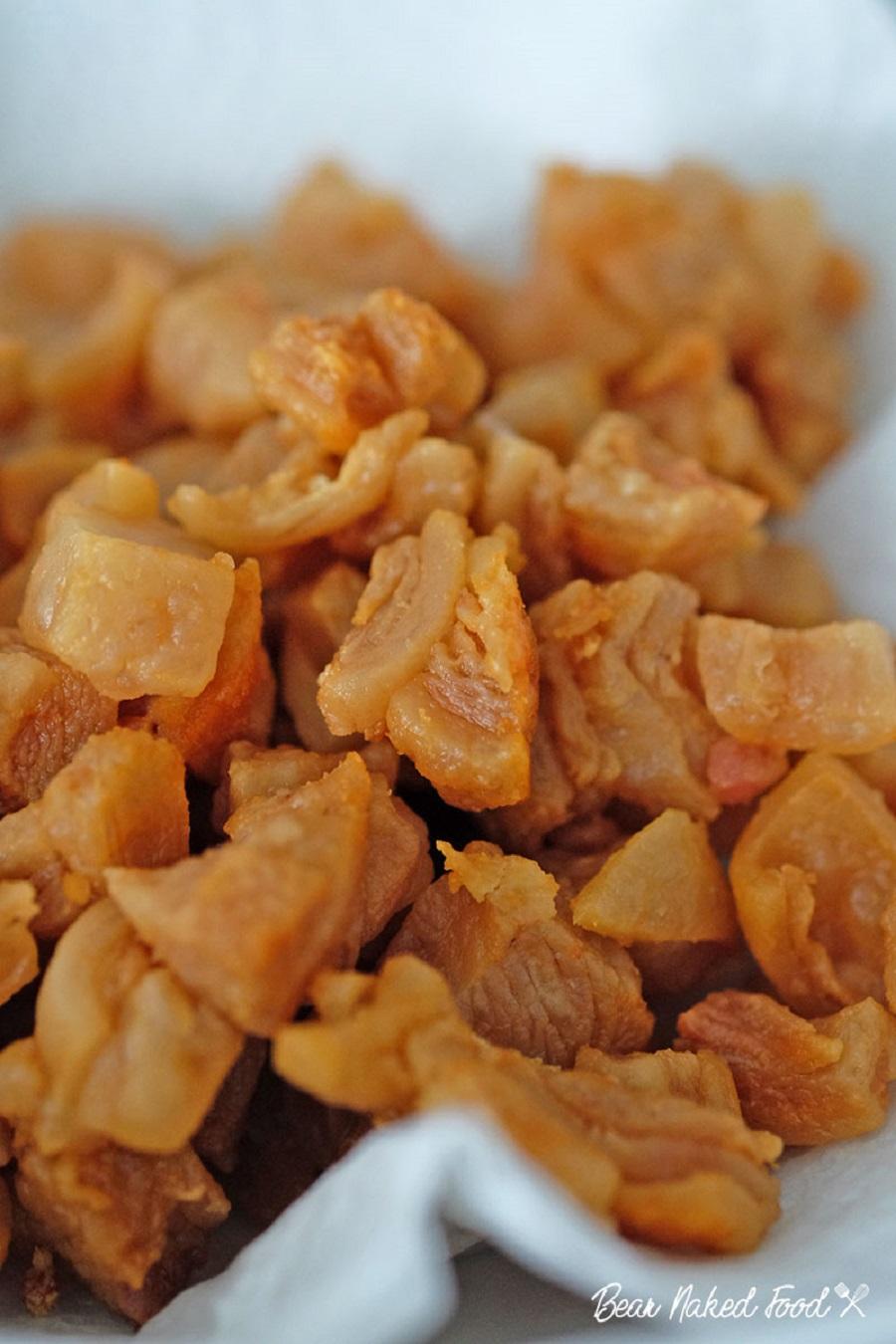
(Image source: Bearnakedfood)
With this simple frying method, you’ll end up with beautifully colored fat and crispy bits, all without any splattering or mess.
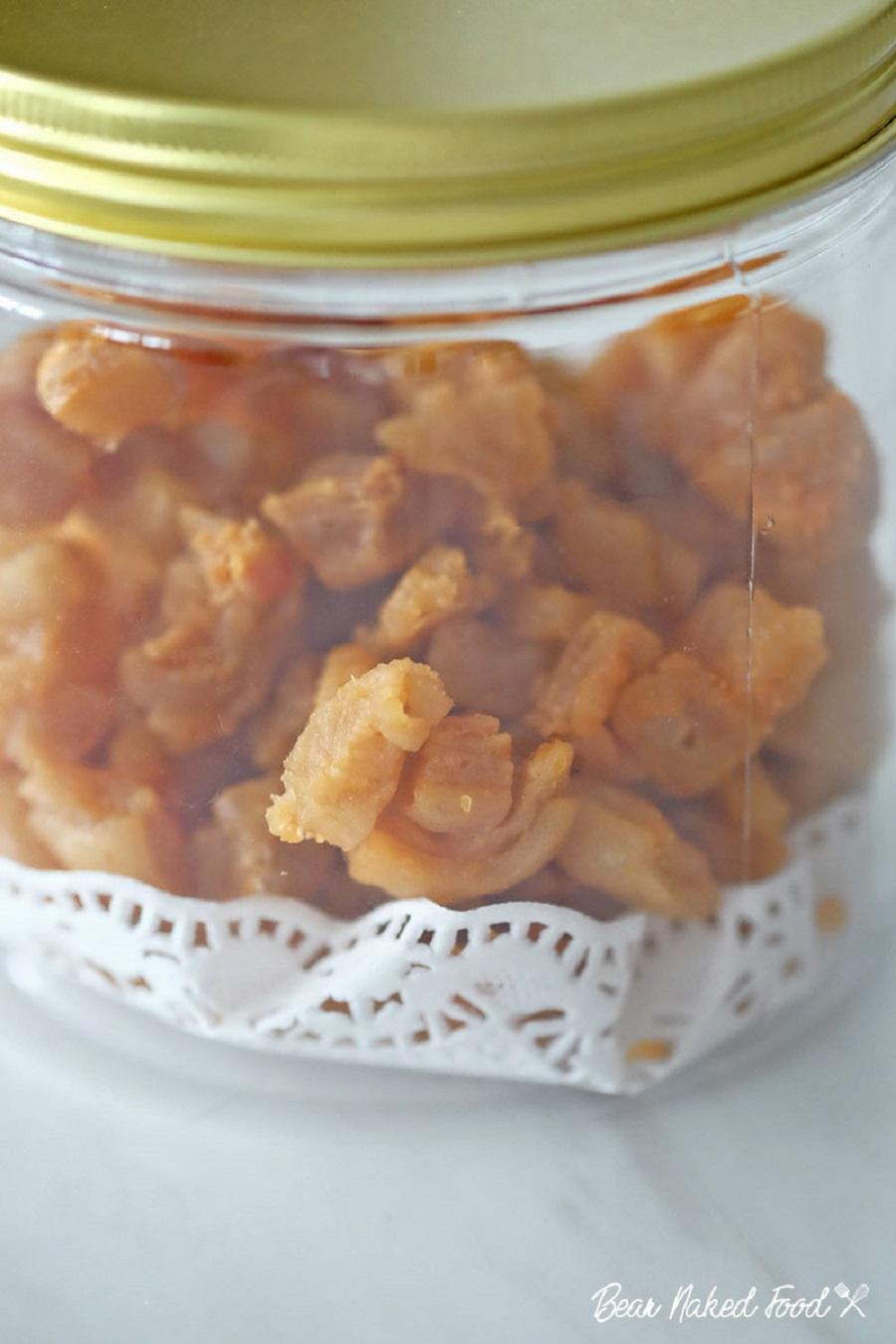
(Image source: Bearnakedfood)

































